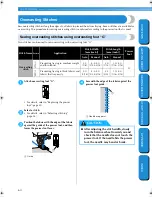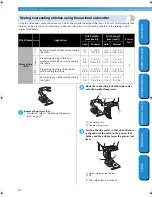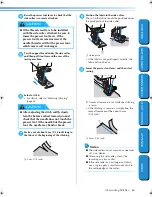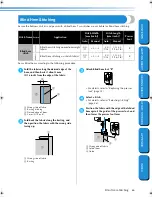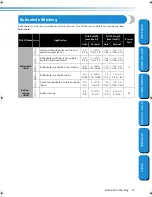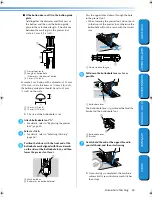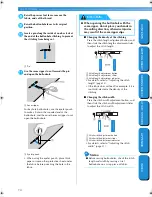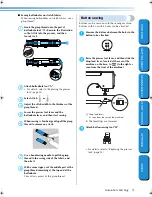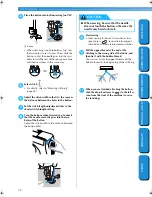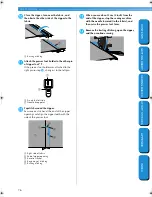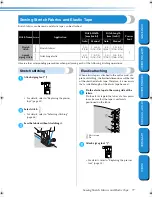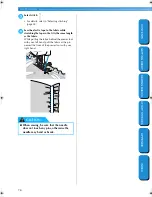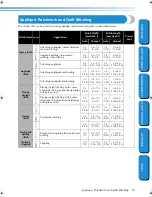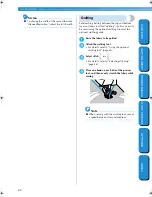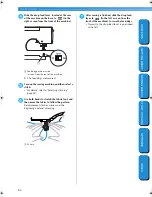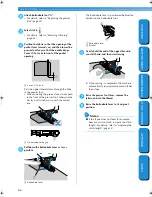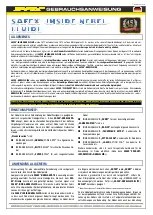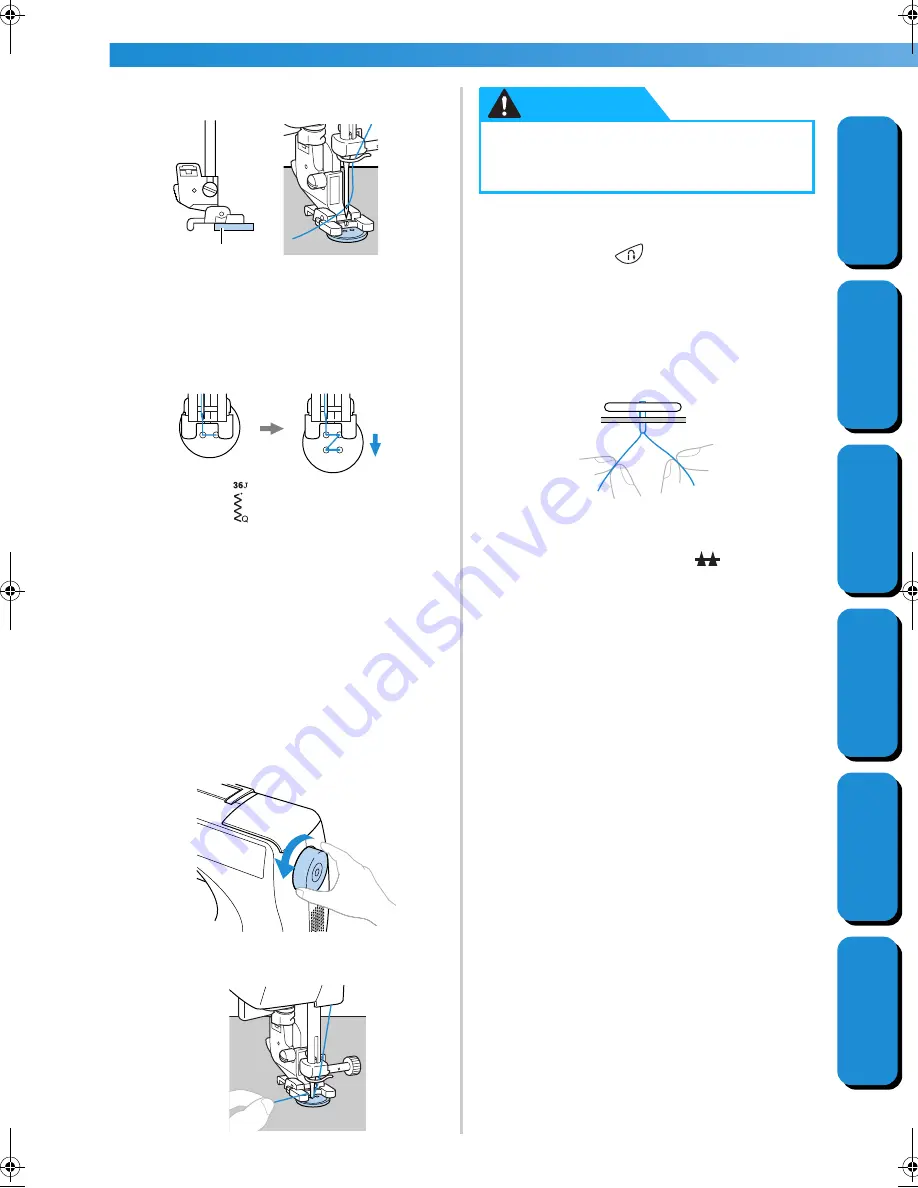
UTILITY STITCHES
———————————————————————————————————————————————————————
72
GETTING READ
Y
CONTENTS
SEWING BASICS
U
T
IL
IT
Y
S
T
ITCHES
APPENDIX
INDEX
4
Place the button into button-sewing foot “M”.
1
Button
• When attaching four-hole buttons, first sew
the two holes closest to you. Then, slide the
button so that the needle goes into the two
holes toward the rear of the sewing machine,
and then sew them in the same way.
5
Select stitch
.
• For details, refer to “Selecting stitching”
(page 58).
6
Adjust the stitch width so that it is the same as
the distance between the holes in the button.
7
Set the stitch length adjustment slider to the
shortest stitch length setting.
8
Turn the balance wheel toward you to check
that the needle correctly goes into the two
holes of the button.
Adjust the stitch width to the distance between
the button holes.
9
Start sewing.
• After sewing for about 10 seconds at low
speed, press
(reverse/reinforcement
stitch button) to sew reinforcement stitches.
0
Pull the upper thread at the end of the
stitching to the wrong side of the fabric, and
then tie it with the bobbin thread.
Use scissors to cut the upper thread and the
bobbin thread at the beginning of the stitching.
a
When you are finished attaching the button,
slide the drop feed lever to
(to the left as
seen from the front of the machine) to raise
the feed dogs.
1
●
When sewing, be sure that the needle
does not touch the button, otherwise the
needle may bend or break.
CAUTION
S2_brotherE.book Page 72 Wednesday, May 14, 2003 8:05 PM



